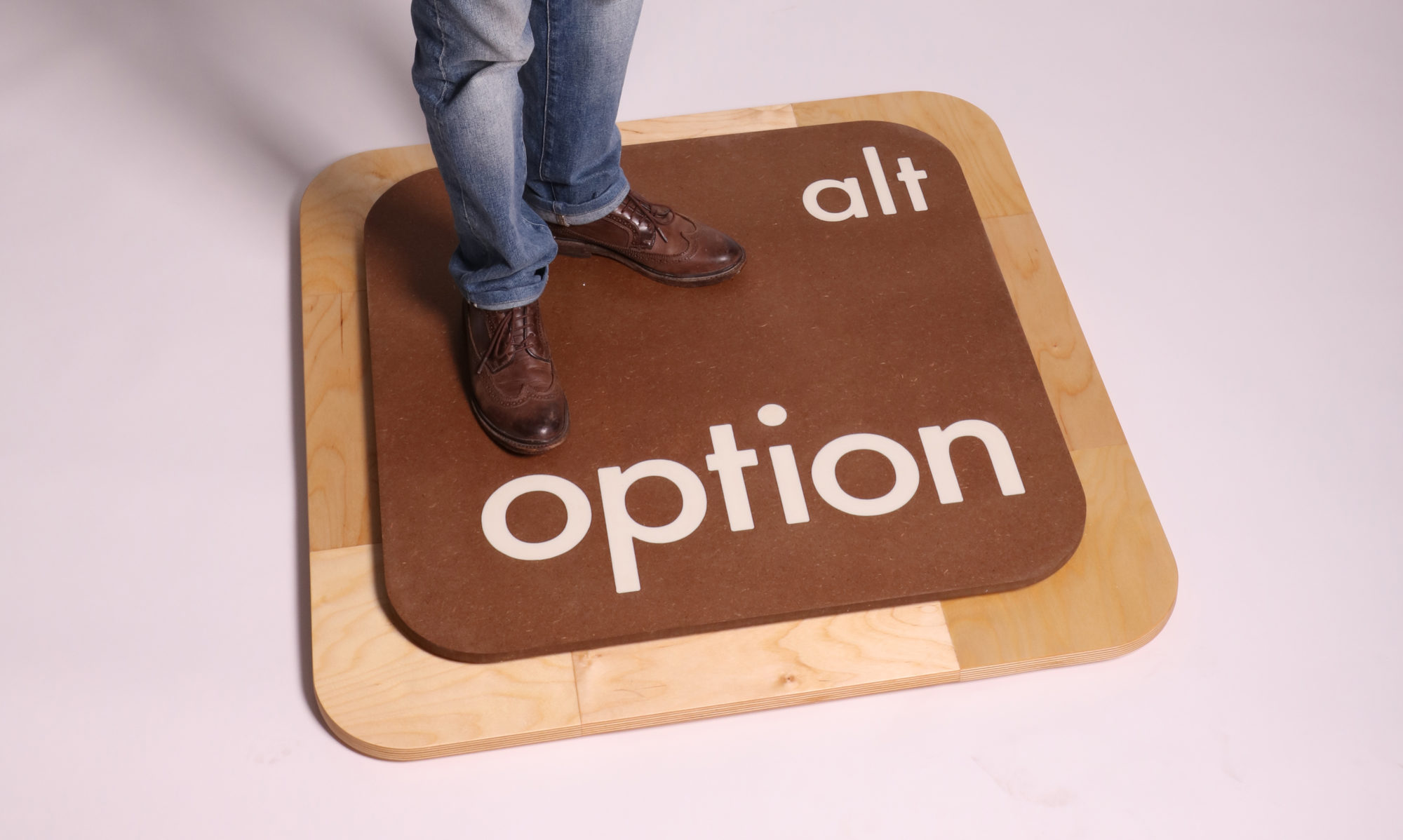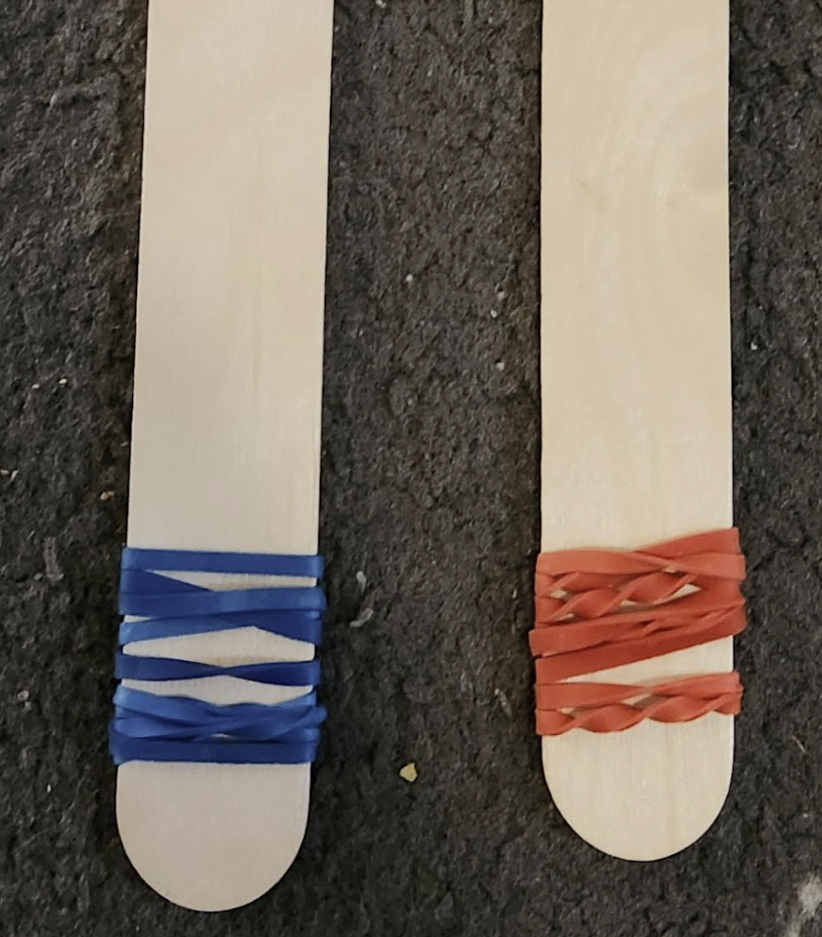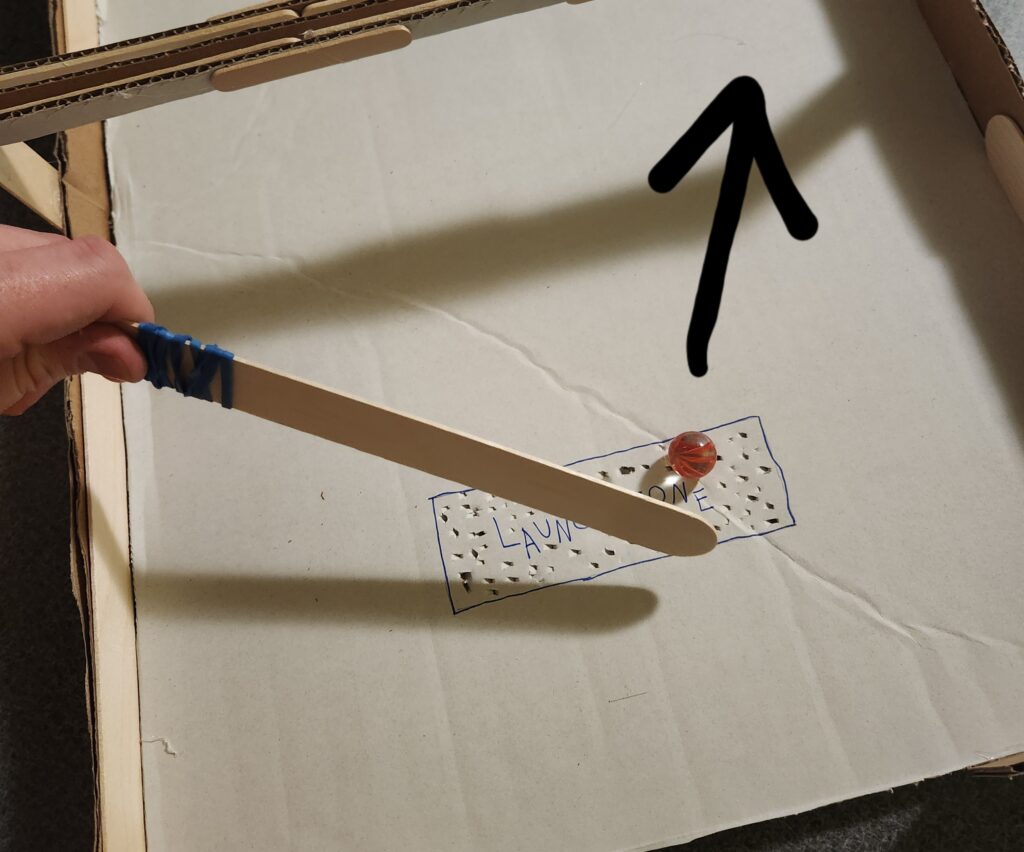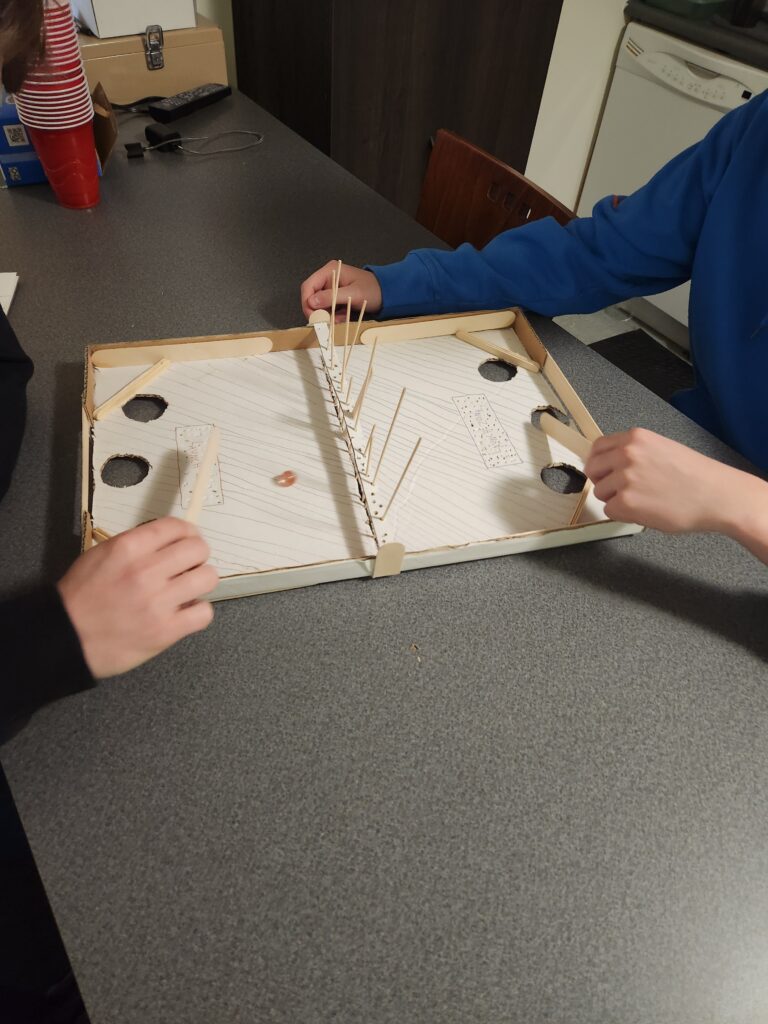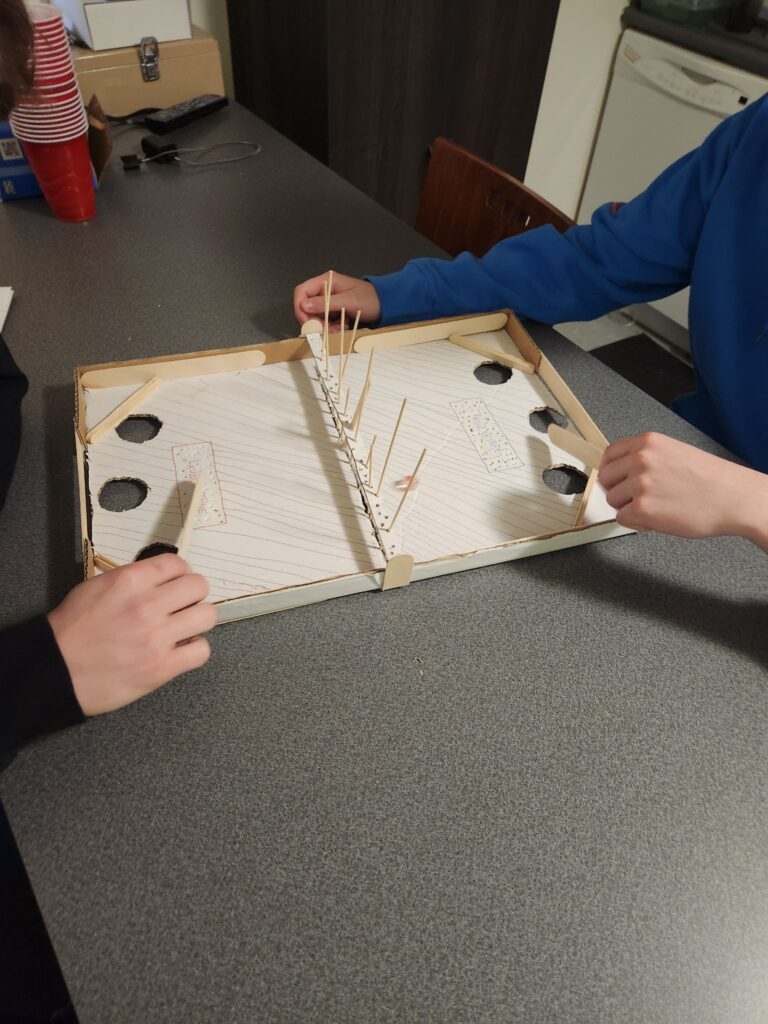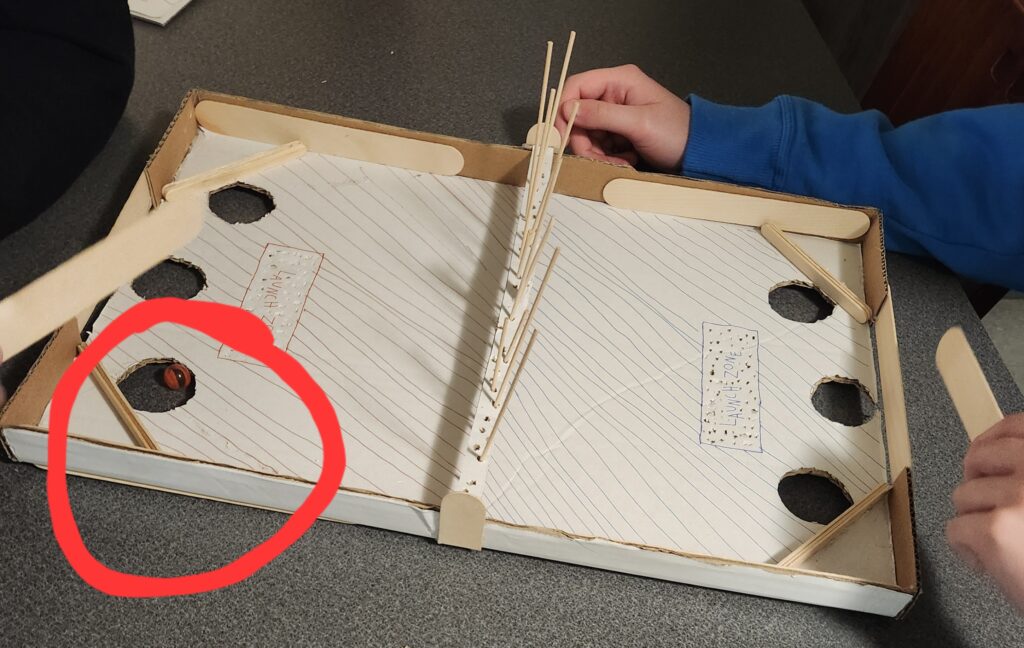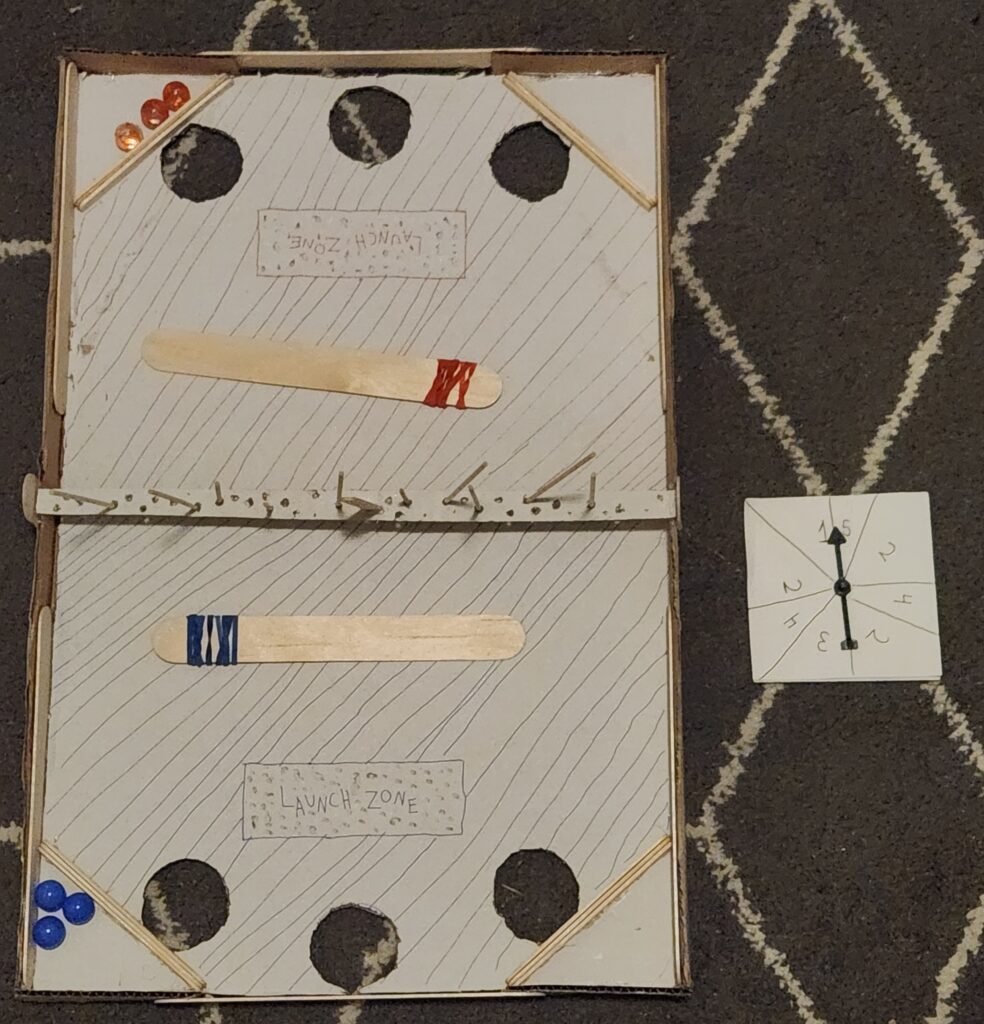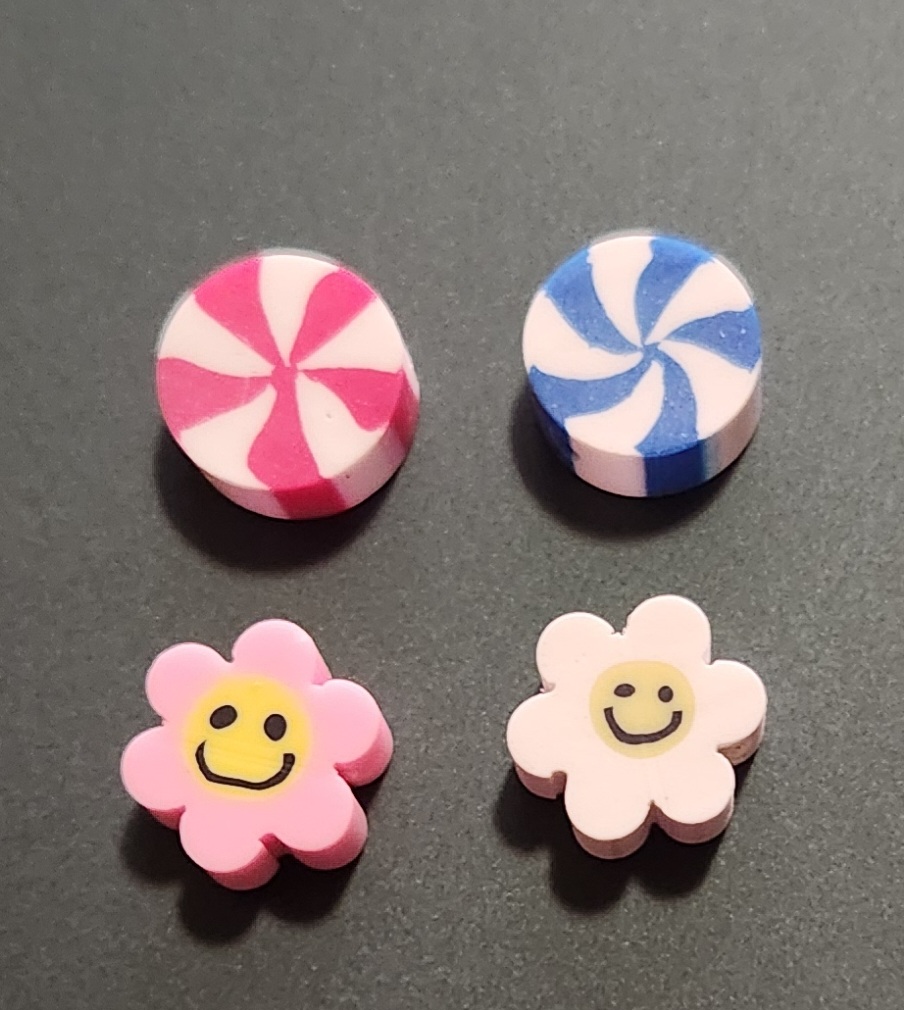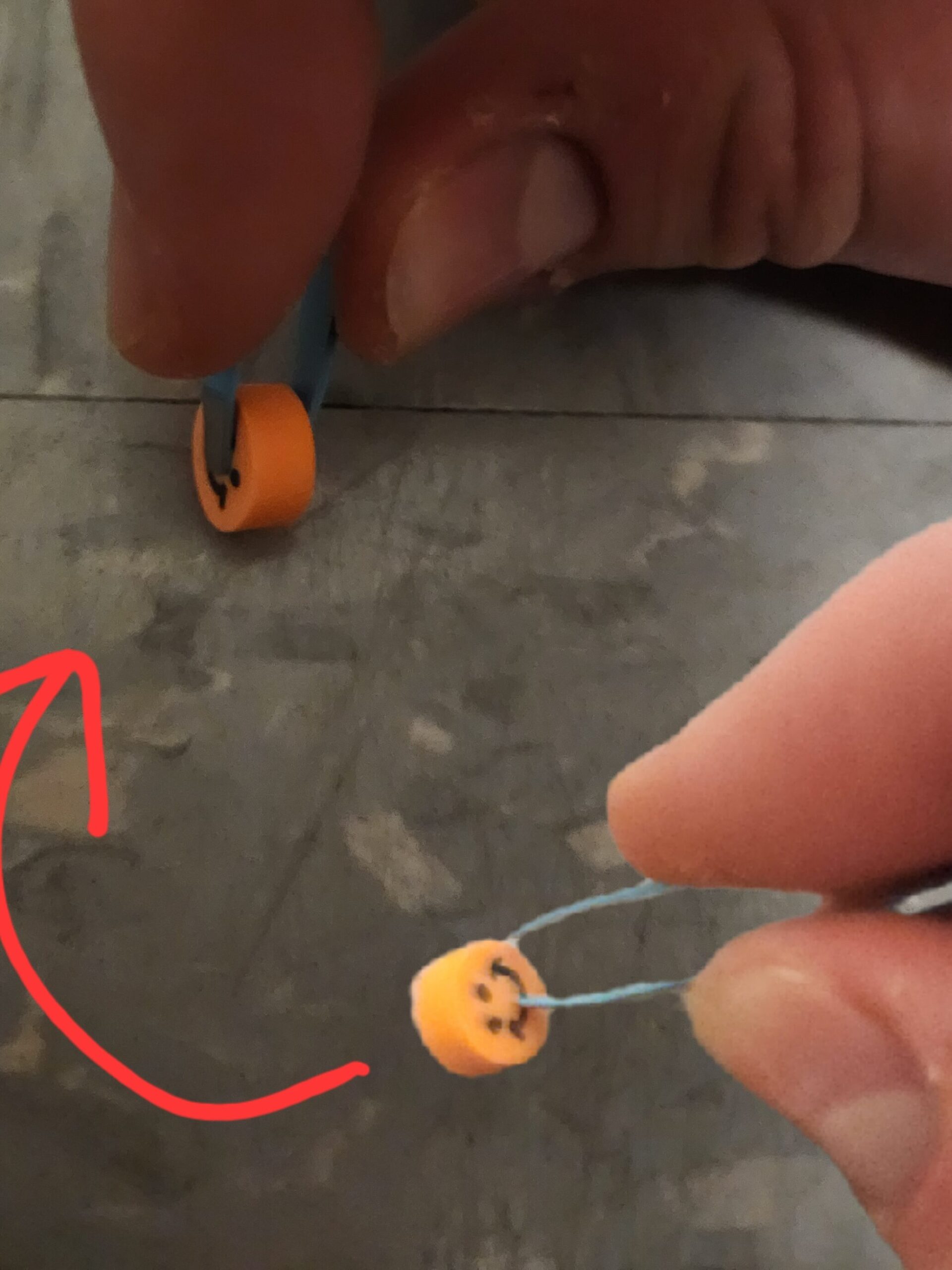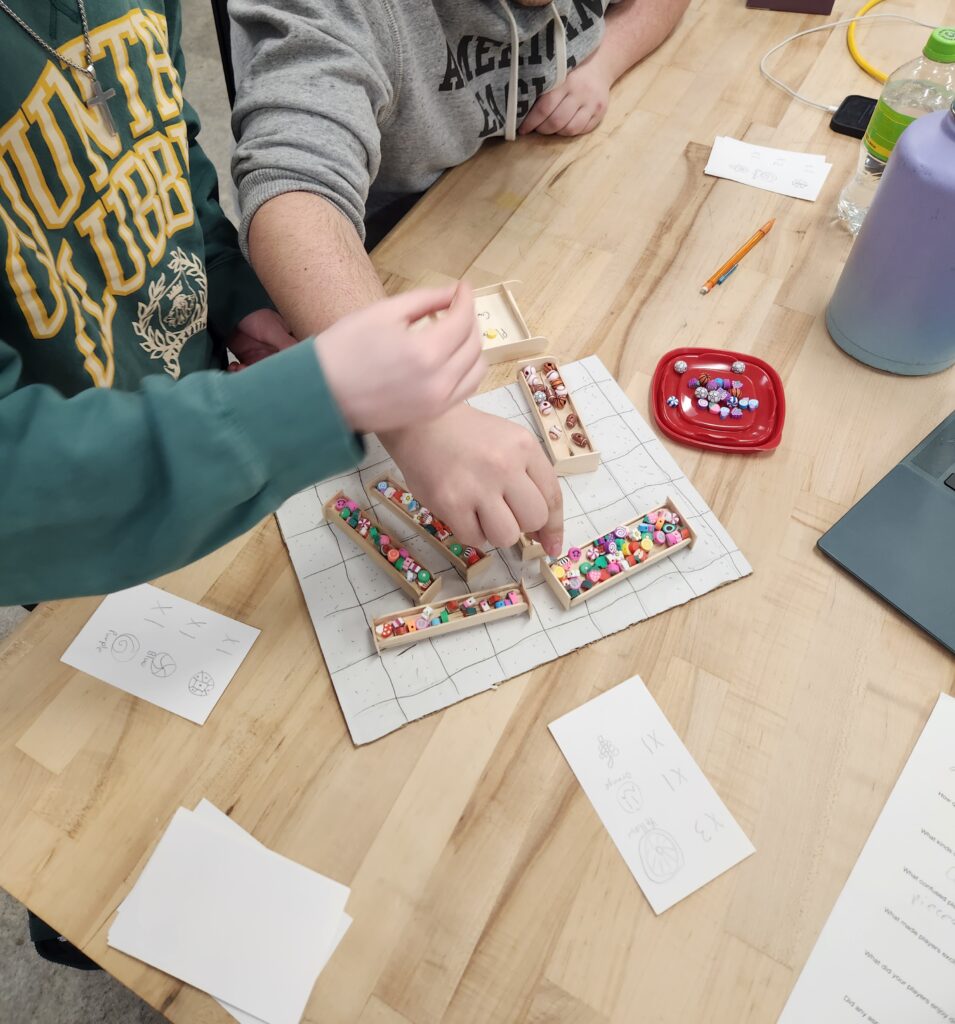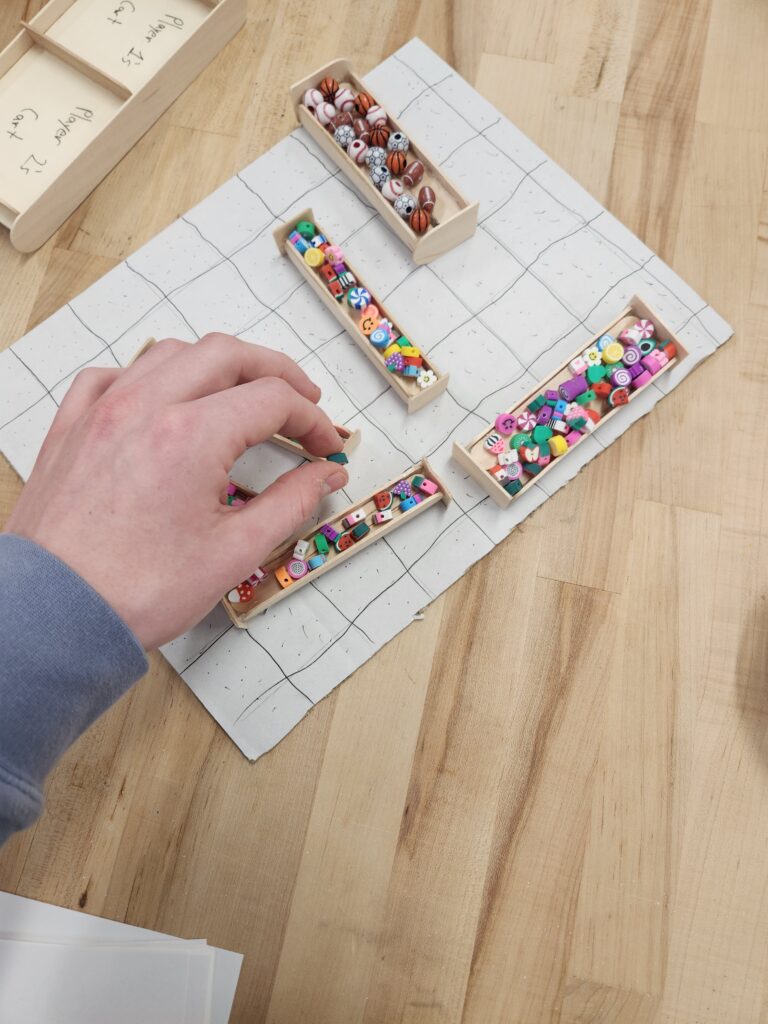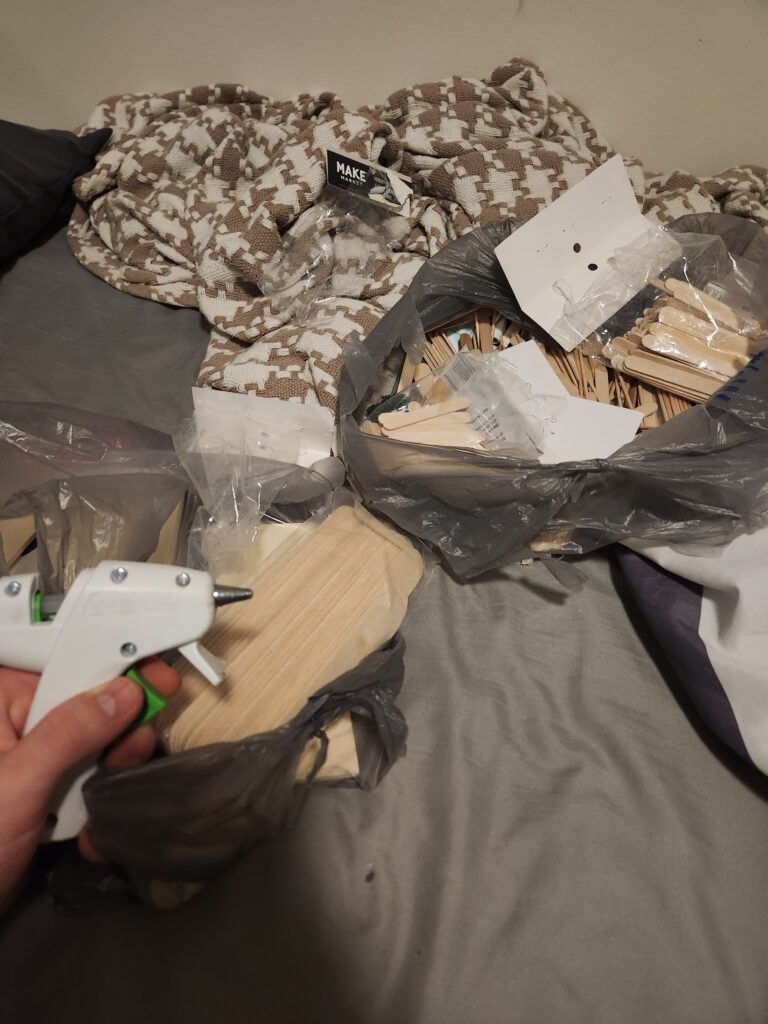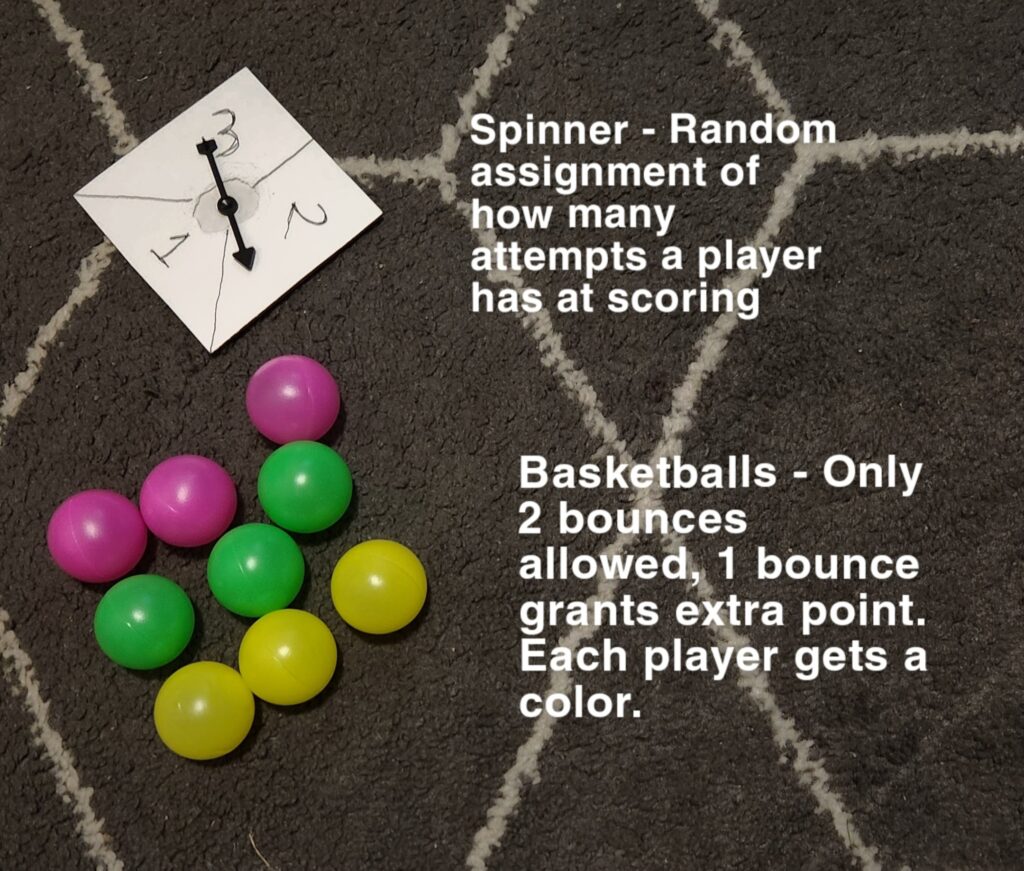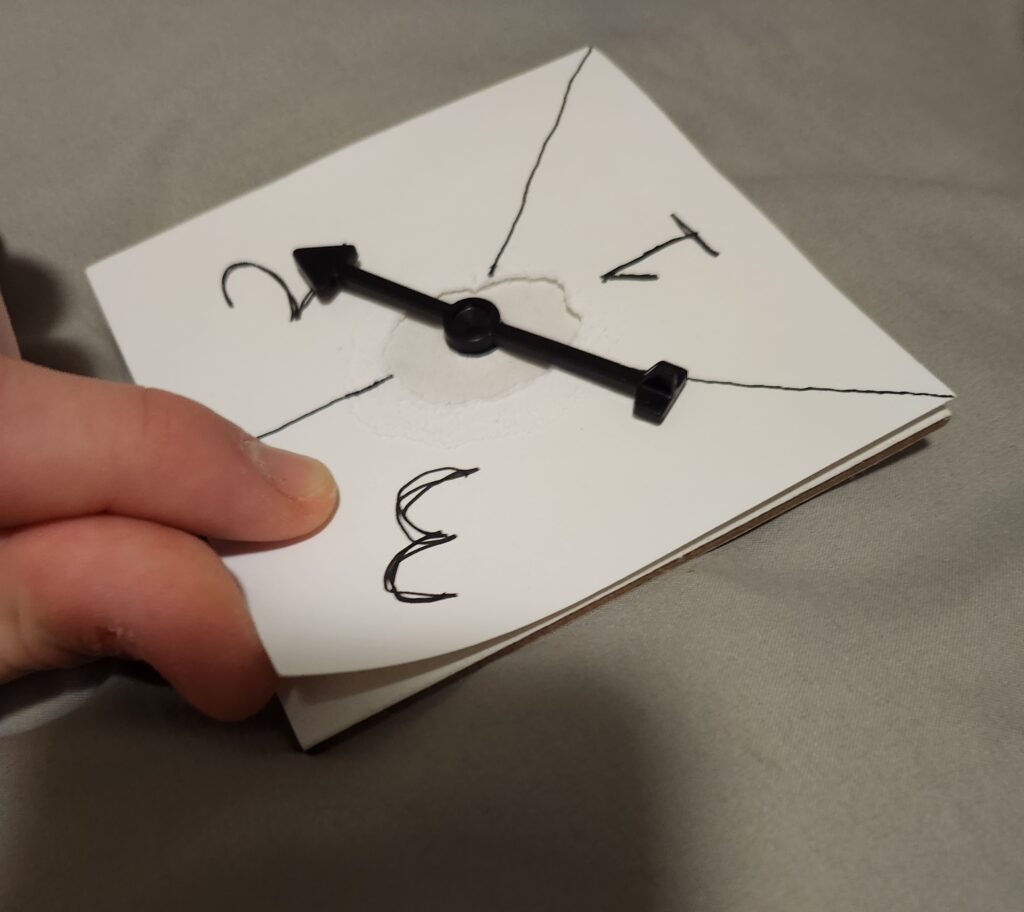Scurry Ship (2 players)
Short Summary
The purpose of Scurry Ship is to remind players of the tragedy of the Titanic. In the final moments of the sinking ship, chaos erupts as tables and chairs slide and the boat breaks off into the water. People run towards the nearest life rafts, some saving themselves while others aren’t able to make it. Although Scurry Ship is fun, the hectic gameplay puts players in the shoes of a struggling survivor. During the gameplay, players must move the cubes around (tables) in order to escort their players to the other side. This will ensure that both people they control will be able to get into the life raft, winning the game and saving their lives.
Design Process & Thought Process
The first and most unique design aspect to the game is the water the boat sits on. There is a subtle elevation from the cardboard boat and the paper water, giving the effect that you are hopping off of the sinking boat and into the raft. I wanted the water to pop with colors of the ocean, showing a contrast between light and dark blues. Within the water, you can find the life raft your characters hop on. The life raft doesn’t sustain any special design element, but I wanted it to be 3-Dimensional instead of drawn in the water. This way, there is depth included in the playing experience, rather than interacting with a flat board.

Next, you can see how the boat breaks off. I cut the board to give the effect of the breakage, as pieces of the boat are damaged from the iceberg.
The board itself has a grid for each cube to sit on. This distinguishes the barrier of movement for the sliding tables and the character pieces. As you can see, some of the squares in the grid are gray, which represent holes on the ship. I added these holes because it was too easy to get to the other side of the board, and the holes slow players down. Nothing can go through or on top of these gray tiles. I made sure that the gray tile patterns remain the same on both sides, so one side doesn’t have any sort of advantage. Speaking of both sides, there is a clear barrier in the middle of the board, which separates both of the players’ boundaries.

And of course, I made sure to make the starting row for the characters green to indicate that it is the starting zone.
Lastly, the pattern cards have a simplistic design to them. I wanted to give them their own design, so I drew a symbol of someone dodging a sliding table.

Game Mechanics
The most notable game mechanic is the movement of your character piece. You can move up and down, side to side but not diagonal. The same logic applies to the tables that you have to slide around. I had to stress the correlation between my game and a slide puzzle in the rules. With the relation to a sliding puzzle, players can better understand how the movement works. This also branches into the mechanic of the gray holes in the ship, because you can’t go over or through the gray tiles.

The other game mechanic are the table pattern cards. These cards give a sense of randomness to the game, which can alter how players start their movement. Additionally, players are allowed to start on whatever green tile they want, but they can’t re-enter the starting zone.


Player Goals
The objective of the game is very straight forward, which is getting both character pieces to the end of the board. Getting to the end of the board is the challenge, in which there are many factors to consider during the playing experience. Just like a slide puzzle, players must shift both of their character pieces through the tables on the board, reaching the life raft. Players must also consider the holes in the middle of the board, which interrupt the movement of tables and characters alike. Making way through the chaos, when both of the character pieces reach the end, the player wins.
Gameplay Sequence


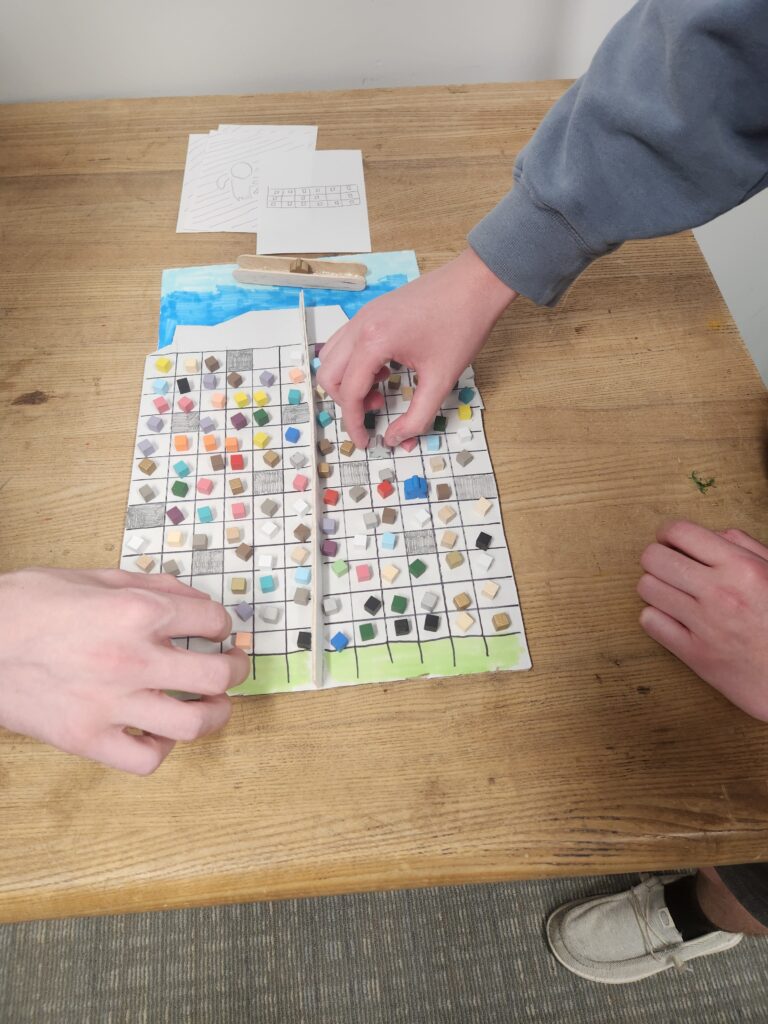
One of the players reached the life raft at the end. They still had another character piece to get in, so they still had work to do. You can see the progression across the board of both player’s character pieces.
Game Board & Components
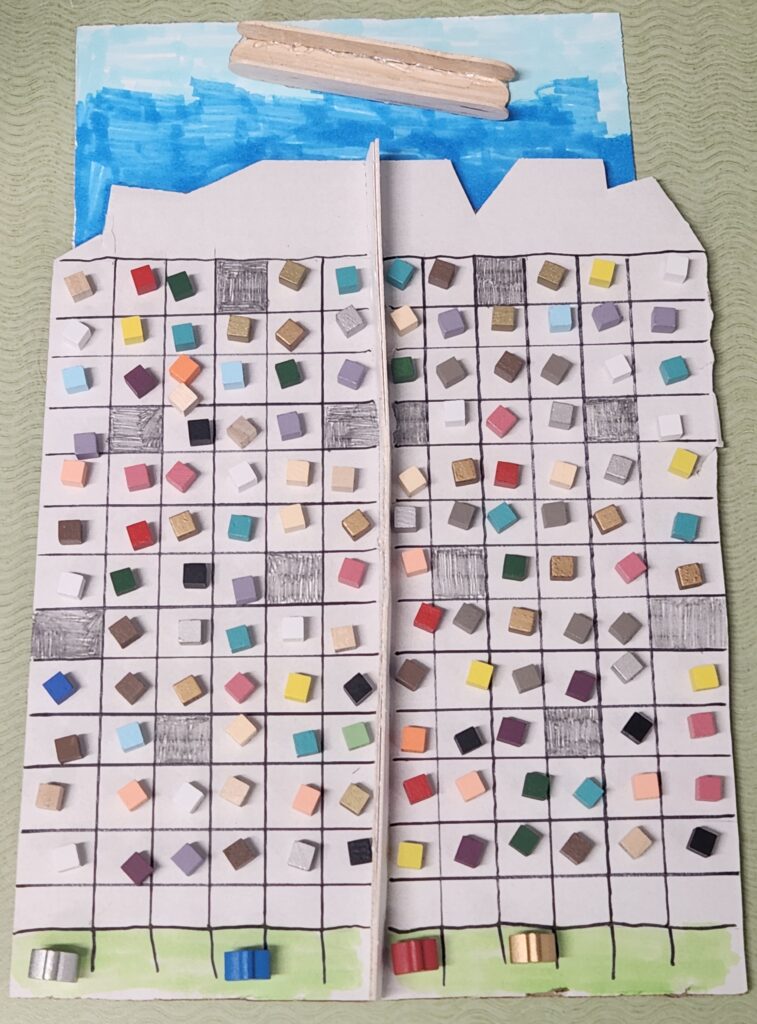
There are a ton of grids for the cubes and character pieces to move around on. Again, you have to compare this game to a giant slide puzzle, as each cube is to be moved around the board. Players will constantly be interacting with the pieces and board components, leading to victory.

Here are the character pieces that need to be brought to the end of the board. Player one has red and gold, whereas player two has blue and silver characters. The pieces differ between the cubes and the characters. The cubes represent the tables, and the characters represent the civilians running to the life raft.
Rulebook & Playtesting
Playtesting Notes
- What questions did your players have?
- One of the questions players asked was about the gray tiles. I specified the mechanics of the gray tiles in the rules, but I realize that this is something that I can make more noticeable/clarified. It could have been easily overlooked, causing confusion. The next question that a player asked was how you are supposed to win. More specifically, what the win indicator is. I noticed that some players didn’t know what to do once they reached the end of the board, leaving them to question if they have won. Along with the win indication, a player asked if both characters had to be on the end in order to win.
- How quickly did they learn to play?
- Compared to my other games, this one took a bit of time for players to get used to. Players had to get used to the slide puzzle mechanic, which took a game or two for them to be fully comfortable. One player tried to jump over the tables, which is specified in the rules not to do. But once they reviewed the rules, familiarized themselves with the core components, they enjoyed the playing experience.
- What kinds of interactions did the players have?
- The direct interaction between players was racing towards the end of the board. Players would periodically observe the progression of the other player, controlling the pacing of their actions. For example, one of the players were reaching the end of the board, so the opponent started moving the pieces around more frantically. This instilled a rollercoaster of emotion from players, from critical thinking to panic.
- What confused players?
- Not much confusion was amongst players, other than the slide puzzle mechanic and the few questions they asked. I think that overall, the confusion lies within tiny unspecified or overlooked rules within the rule sheet.
- What made players excited?
- Players were excited based on their thinking capabilities, which reflected based on their performance. They loved the competition against the other opponent and felt a sense of accomplishment knowing they outsmarted their rival. When a player would reach the end of the board, they would eagerly put their pieces in the life raft. In a moment where a player would get stuck in a corner, they would also get excited at solving the problem and progressing.
- What did your players enjoy doing?
- Players enjoyed progressing their pieces to the end of the board. They liked the constant flow of movement, providing a quick-paced gameplay. Additionally, they enjoyed flipping the pattern cards over, because it was a charm of randomization.
- Did any aspect of the game frustrate players?
- There were two main things about the game that frustrated the players. The first and foremost frustration was the fact that the gameplay was repetitive. The purpose of the pattern cards was to add a sense of randomization to the gameplay. However, in the end, the gray tiles are in the same place every game and the tables can be moved around the randomized patterns, making no difference. The second frustration was that the game was bare bones and could use a spice up. This and the repetitive gameplay go hand-to-hand, urging a sense of touch up.
- What is your plan to address player questions. Confusion and frustration?
- In order to address player confusion and frustration, I can add more components to the game. This could add more fun factors that can alter the pacing of the game, or maybe even a sabotaging aspect for the players. Maybe I can find a way to randomize the gray tiles, making each route for the playing experience different. As for any confusion, I plan to tweak the layout of the ruleset. I made sure to add extra pictures to the rules, so player confusion could be reduced majorly. But after realizing there are some things that players still questioned, I can find new ways to emphasize these clarifications in the rules. Maybe new pictures or angles can help…
Game reflections
I think that this game out of all three is my most promising one yet. From the development of this game, I applied my knowledge of slide puzzles into a playable experience between both players. I also like the competitive aspect of my games, which is a reoccurring theme through all three games. I have learned how to balance a lot of luck with skill, implementing mechanics that make an enjoyable playing experience. The only thing that I will do differently next time is make sure to make clarifications on specific game mechanics that might confuse players. A lot of things to take into consideration revolve from the way I word things on my ruleset, so I will have to learn better layouts for pictures and diagrams. A player of my game recommended maybe I add big pieces to the game in a future iteration, which takes up multiple squares on the grid. I can definitely agree on the fact that with future games, I can find new ways to spice up the playing experiences.
